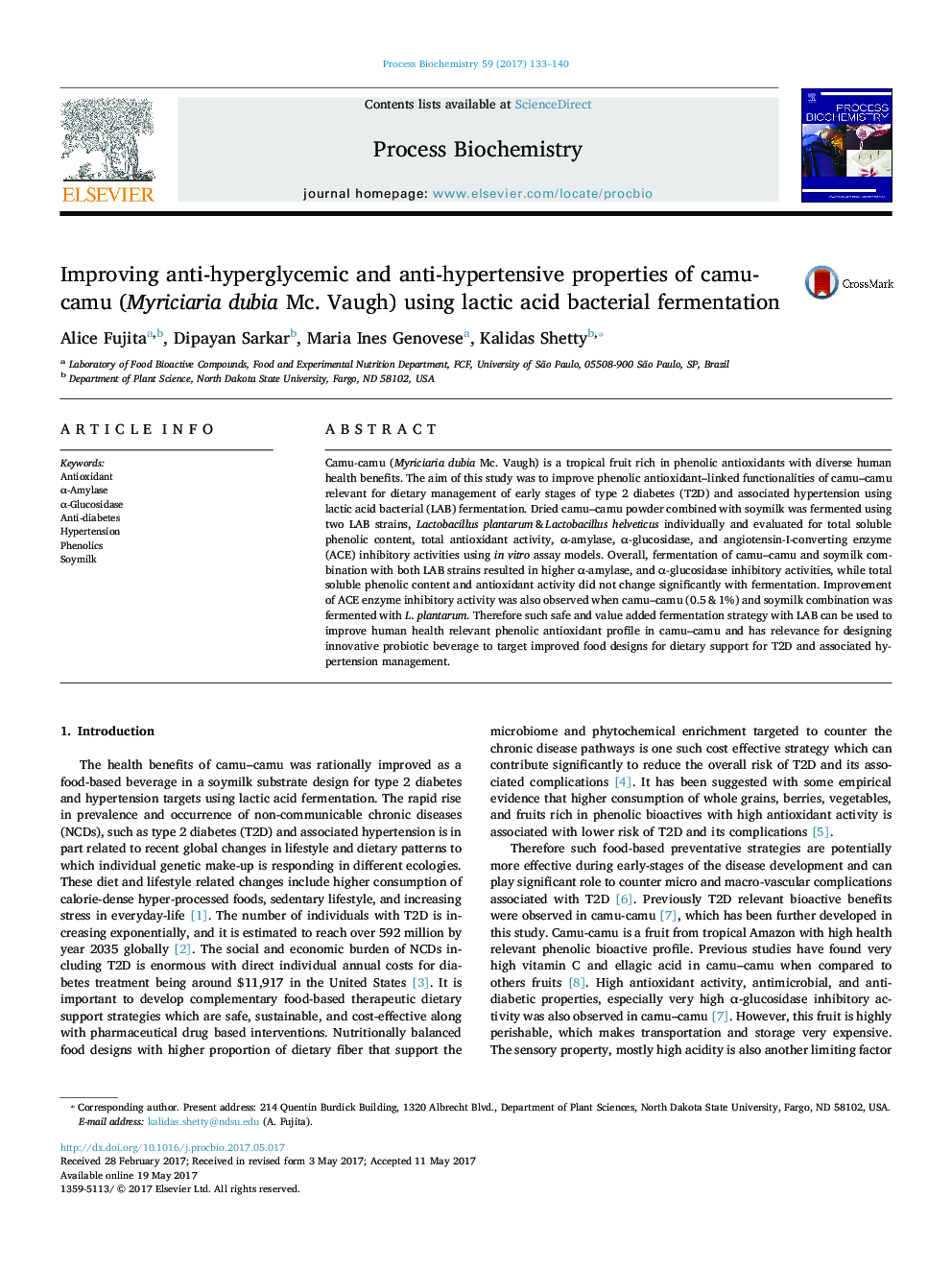| Article ID | Journal | Published Year | Pages | File Type |
|---|---|---|---|---|
| 6452939 | Process Biochemistry | 2017 | 8 Pages |
â¢Camu-camu fruit is a rich source of phenolic bioactives with human health benefits.â¢LAB-based fermentation strategy was used to improve T2D relevant bioactives.â¢Improvement of phenolic antioxidant activity was observed with LAB fermentation.â¢LAB fermentation improved anti-hyperglycemic bioactives.â¢LAB fermentation also resulted in high anti-hypertensive bioactivity in vitro..
Camu-camu (Myriciaria dubia Mc. Vaugh) is a tropical fruit rich in phenolic antioxidants with diverse human health benefits. The aim of this study was to improve phenolic antioxidant-linked functionalities of camu-camu relevant for dietary management of early stages of type 2 diabetes (T2D) and associated hypertension using lactic acid bacterial (LAB) fermentation. Dried camu-camu powder combined with soymilk was fermented using two LAB strains, Lactobacillus plantarum & Lactobacillus helveticus individually and evaluated for total soluble phenolic content, total antioxidant activity, α-amylase, α-glucosidase, and angiotensin-I-converting enzyme (ACE) inhibitory activities using in vitro assay models. Overall, fermentation of camu-camu and soymilk combination with both LAB strains resulted in higher α-amylase, and α-glucosidase inhibitory activities, while total soluble phenolic content and antioxidant activity did not change significantly with fermentation. Improvement of ACE enzyme inhibitory activity was also observed when camu-camu (0.5 & 1%) and soymilk combination was fermented with L. plantarum. Therefore such safe and value added fermentation strategy with LAB can be used to improve human health relevant phenolic antioxidant profile in camu-camu and has relevance for designing innovative probiotic beverage to target improved food designs for dietary support for T2D and associated hypertension management.
Graphical abstractDownload high-res image (112KB)Download full-size image
